How to tell if your knives are dull
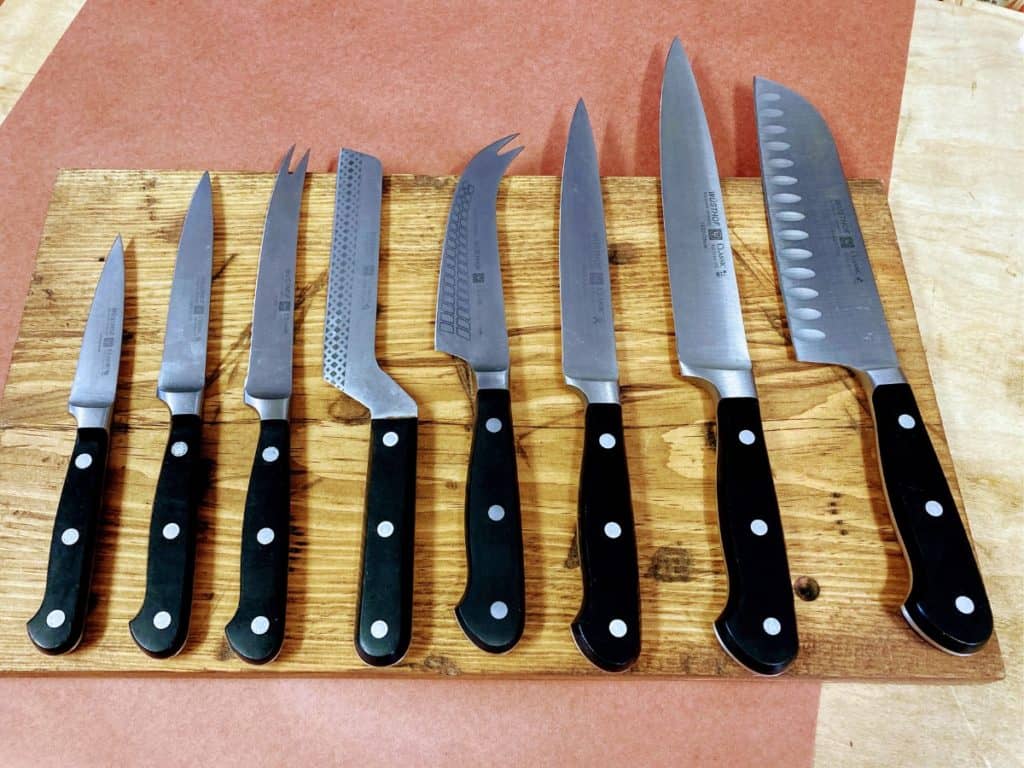
Kitchen knives dull over time. You may not even notice it. You just get used to how they cut. It may never even enter your mind until maybe by chance you try cutting that apple with a sharp knife and you think, “Oh, this is what I’ve been missing!”
Of course the rate and extent at which knives dull out varies depending on use and what you’re cutting, but generally, over time they will go from a sharpened to dull state. Related post: Wondering if you’re knives are worth sharpening?
So how do you know? When is it time to get those edges back?
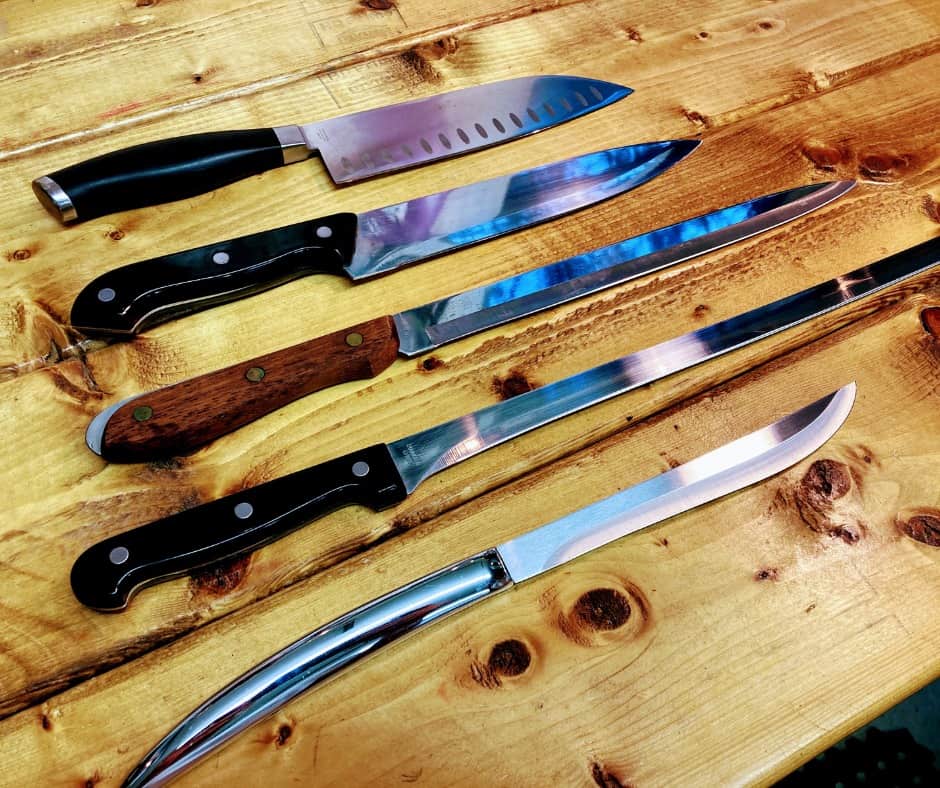
Sometimes all you need to do is run your knife blade on a hone a few times. If the edge isn’t too bad, this usually will be enough to bring that edge back into alignment. I recommend a ceramic hone, rather than a steel one. Unfortunately, the hones that usually come in the block are steel and can really do a number on a knife. If this doesn’t make any improvement, try these simple tests.
The visual test
Get yourself in a well lit area, preferably with ample overhead lighting. Turn the knife over so that the edge is facing you. If you see light glinting off the edge, then you know that your knife is dull in those spots. Think about it, a knife edge apex should be a perfect point. The two faces of the blade meet at this point. When it’s sharp, there is no flat surface for the light to bounce and shine off of.

With a fully formed and pointy edge apex, there is not enough surface area for the light to reflect off. So when the knife is dull and the edge gets rolled over, and becomes rounded or flat, that’s when you’ll see the reflection off that flat spot.
The paper test
This is more tactile and definitive. Take a page from a magazine, phone book (those still around?), catalog or newspaper, and see if you can slice through it. You get a lot of feedback this way. If you can’t get the cut started or it makes a real jagged cut, then you know the knife is dull too. With this test, you want to cut from the heel of the blade all the way through to the tip if you can. This way you’ll be able to see and hear where the edge needs work.
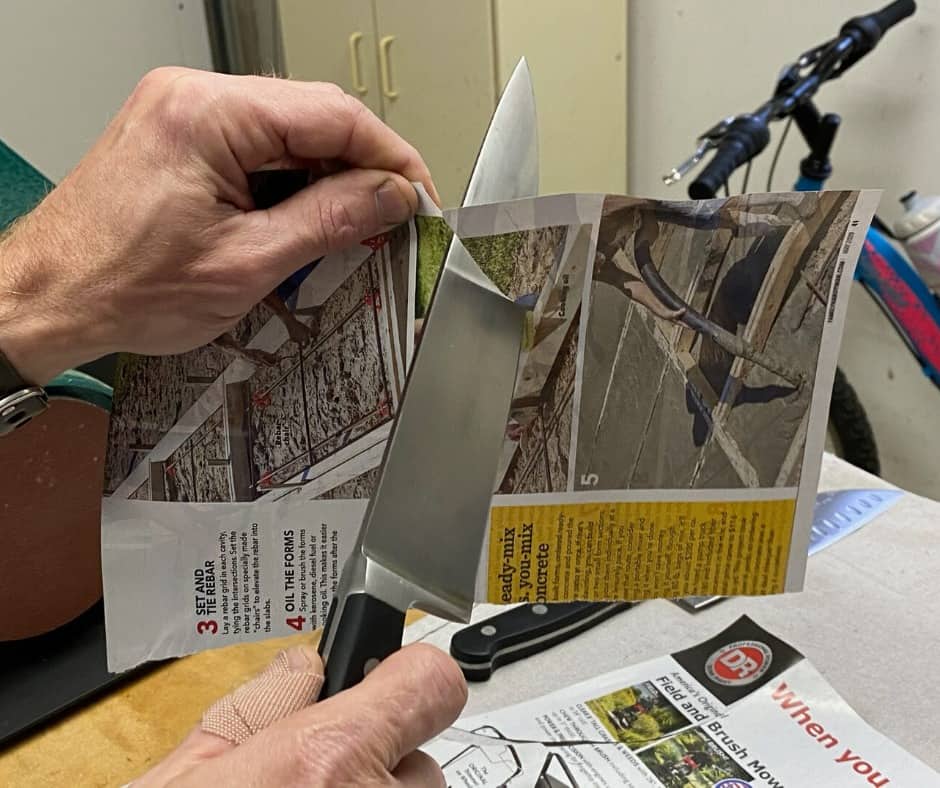
I love this paper test. I do it on every single knife that comes across the bench here at Norfolk Sharpening. I test them before and after the sharpening process. I test before not just to see how dull the blade is, but also to feel where potential nicks and chips may be, the ones that I can’t readily see with my eye. The after test just confirms that I did a good job and didn’t miss anything (plus it’s super satisfying).
A sharp knife is a safe knife
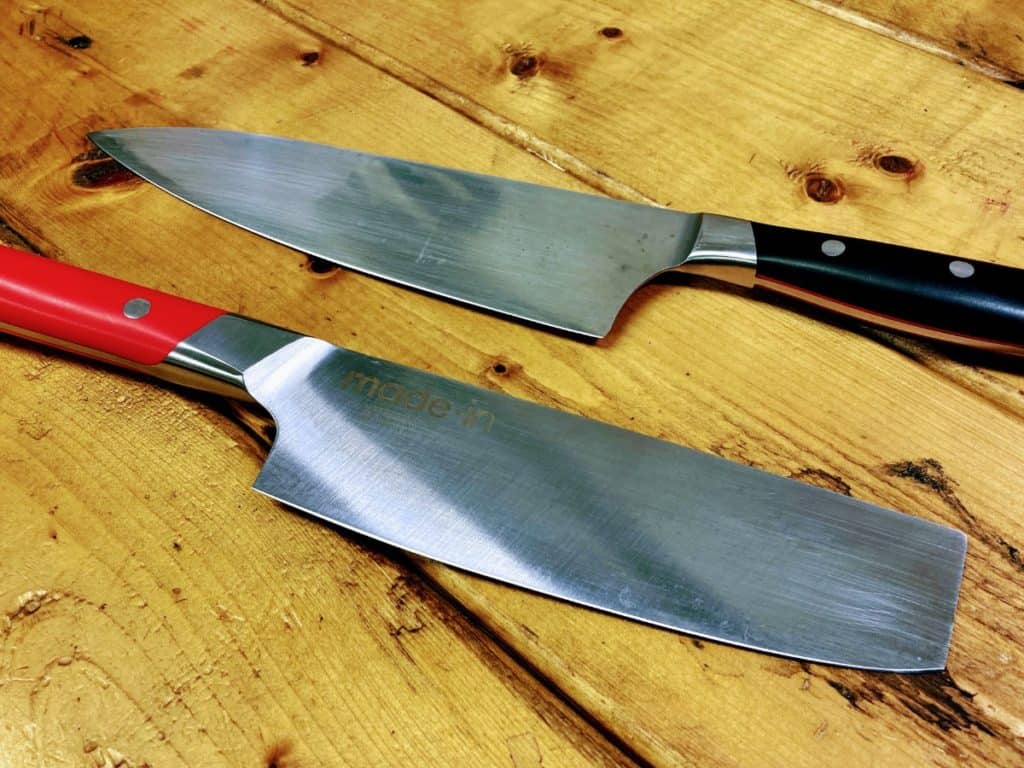
One of the most counter-intuitive sayings in sharpening is “a sharp knife is a safe knife”. It doesn’t make sense when you first hear it, but makes more sense once you start using sharp cutting tools. Think about it. You’re trying to cut that apple, carrot, or butternut squash, and it slips off. It’s not sharp enough to bite in. It could potentially slip off and cut you.
One of the scariest reasons why dull kitchen knives are more dangerous is the fact that since it’s dull and not sharp enough, you tend to use more force to make the cut. Pair that with a rounded edge that’s not biting in, and you have a recipe for disaster. The knife is just sharp enough to penetrate skin, and you’re using all that force to make the cut. That is one painful lesson to be learned.
Bring your knives in for sharpening to see the difference
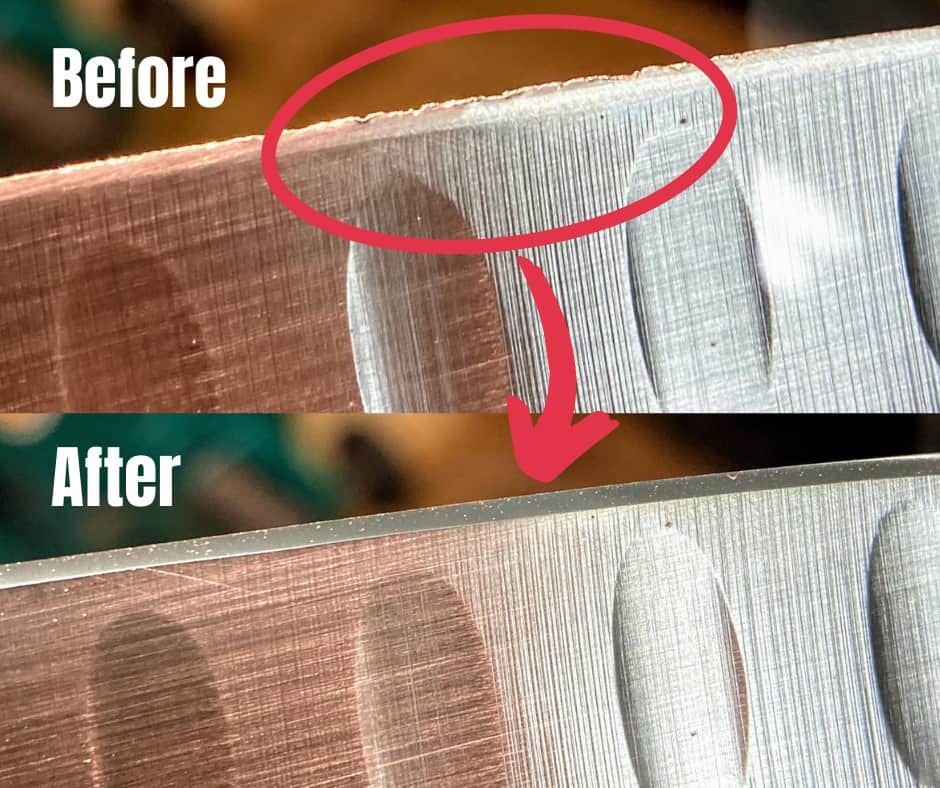
So, check your kitchen knives today and see what shape they’re in. If they’re in rough shape, think about getting them sharpened. Not only are they a lot safer to use in the kitchen, but you’ll be amazed at how much easier your prep will be.
One thought on “How to tell if your knives are dull”
Comments are closed.